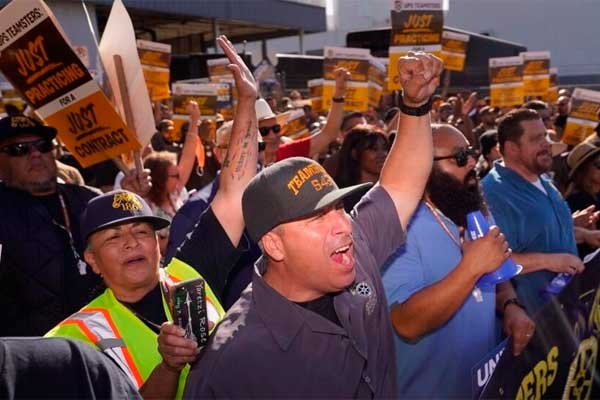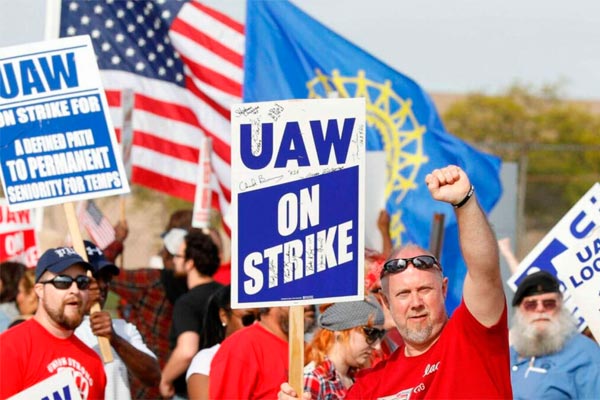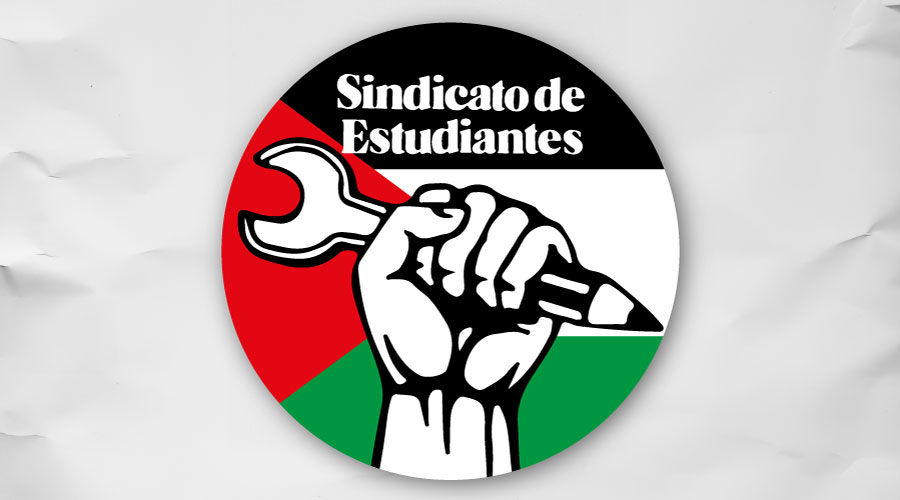On 22 August, UPS workers ratified, with 86% and 56% participation, the agreement reached between the negotiating committee and management on a new agreement until 2028. With a workforce of 340,000 workers in the US and a profit of 13 billion dollars last year, the company is a key logistics giant on which countless US companies depend.
A strike, as the industry union, Teamsters, had already declared, would have created enormous complications, costing the company between 80 and 170 million dollars a day and with financial losses in the 10 days of the strike of up to 7 billion dollars for the US economy as a whole.
A historic agreement or social peace to guarantee capitalist profits?
Following the agreement, the Teamsters president ,Sean O'Brien, the union leadership and broad sections of the US left have come out to call it a historic agreement. Even President Joe Biden himself has come out at a press conference to highlight this agreement and that of the dockworkers, who also reached an agreement in extremis a few days later, and whose strike would have coincided with that of UPS.
Despite some limited concessions, the agreement is far from reflecting the fighting willingness of the workforce and the potential for a resounding victory after decades of setbacks. A rise of $1.5 an hour has been achieved, far short of the increase in line with inflation demanded by workers. They have also achieved a commitment that new trucks purchased will have air conditioning, a ban on security cameras on trucks being pointed at drivers and the recognition of Martin Luther King Day as a public holiday.
But the aspect most emphasized by union leaders was the supposed end of the two-tier pay scale system, with one sector on full-time contracts and the other, by now the majority, on part-time. UPS pledges to create 10,000 new full-time jobs, which is an achievement of the struggle, but this does not mean that the two-tier system will disappear. In fact, a new, even more precarious category is being created, in which delivery drivers would work with their own vehicle.

The Teamsters leadership, despite the movement unleashed among the workers to prepare for the strike and the broad solidarity achieved through militant action, has invested all its strength in desperately trying to reach an agreement to avoid work stoppages. What's more, at first they said they were willing to work on Sundays, "to adapt to the times", but the opposition and criticism of the staff forced them to back down and put the strike call on the table.
A historic wave of conflict and workers' struggles
Finally, the bosses have decided, with the full involvement of the Biden administration, as it is happening in sector after sector, to make some limited concessions in order to guarantee social peace. A decision that is not unrelated to the process of strikes and labour struggles sweeping the country, and which could have turned this strike at UPS, one of the largest companies in the country, into a new example of struggle. Hence Biden, a genuine representative of big capital, has breathed a sigh of relief and publicly congratulated the workers.
The UPS workforce is no exception in the US. Labour conflicts, after decades of setbacks and social peace, are increasing exponentially. In the automotive sector, a conflict similar to that of UPS is also being prepared, and a strike could be triggered in the big three, the large multinationals General Motors, Ford and Stellantis. A joint strike at UPS and in the auto sector would have been a real inspiration, advancing the struggles and demonstrating the firepower of the American working class.
A recent poll showed that 88% of young Americans support union organising and union struggle. This is no coincidence. The most precarious working class youth are the ones who have taken the most steps in this direction. At Amazon, Starbucks and in the fast food sector, workers have organised unions despite hyper-restrictive anti-union legislation, which the Biden administration has no intention of repealing, and they have conducted strikes and open labour disputes.
Big unions like the Teamsters and the UAW (United Auto Workers) are also reflecting this change. In both cases there has been a change in leadership, reformist but with a more militant and left discourse that has won the support of workers in their struggle against a real mafia, in the literal sense, that has controlled both unions for decades.
A revolutionary anti-capitalist and socialist alternative must be raised!
However, despite these steps, these new leaderships lack a revolutionary and anti-capitalist political perspective, assuming the postulates of reformist trade unionism, of the lesser evil and, therefore, being limited in their battle against the bosses.

A perspective to which political organisations like the DSA, which has deployed a historic militant solidarity campaign in preparation for the UPS strike, could contribute, but which refuses to intervene politically in the trade union movement by offering a militant, anti-capitalist and socialist political programme. They publicly state that their role should be limited to solidarity and "not to giving advice"[1]. An important mistake.
This mistaken policy plays into the hands of the most bureaucratic and reformist positions in the unions and has led the DSA leadership to uncritically support the agreement signed by Teamsters, instead of opposing it by explaining that there was strength to achieve more and win a resounding victory, militantly organising the strike, extending it and unifying it with other sectors in struggle.
The DSA, an openly left-wing organisation that claims to be socialist, has grown in militancy and influence in recent years in the heat of the Bernie Sanders movement, Black Lives Matter, the trade union and women's struggles, and the anti-fascist battle against Trumpism. And it has become a reference, with an important public influence, with congresswomen and senators like Ocasio-Cortez and positions in city councils and state congresses.
Refusing to give a political perspective to the trade union struggle means giving all the leeway to the capitalist and imperialist government of Biden and the lifelong Democrats, and in the end assimilating with them[2], who work tirelessly to stem the tide of workers' struggles and strikes, to guarantee social peace and the huge profits of the American capitalist monopolies.
The UPS strike could have been a turning point, coming together with the longshoremen and now the auto workers, as well as the strike of screenwriters and actors and actresses that has paralysed Hollywood, one of the country's major industries, for two months now. Unifying struggles with a political perspective is the only way to achieve solid and significant gains for the American working class, and to be able to confront the threat and increasingly openly fascist demagogy of Trumpism.
Footnotes:
[1] Strike Ready DSA: An Instrument of Solidarity
[2] At the end of 2022 and faced with the imminent call for a strike in the railway sector (over 100,000), the Biden Administration banned their right to strike by resorting to the anti-union legislation of 1926. Scandalously, this repressive action had the votes of all DSA congressmen except Rashid Tlaib.





















































